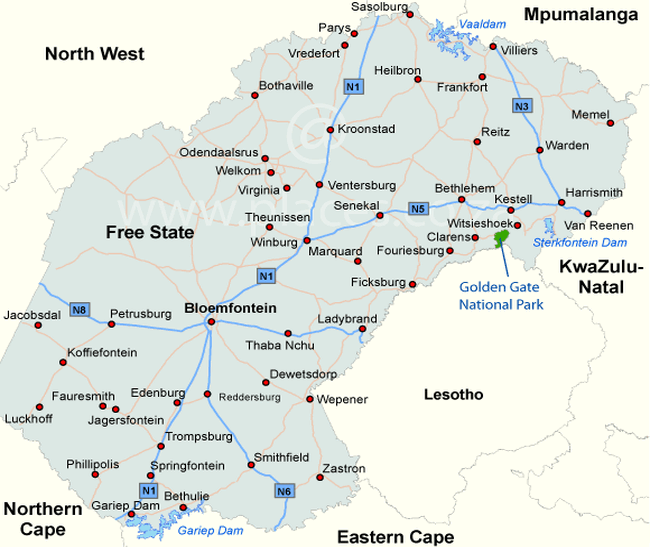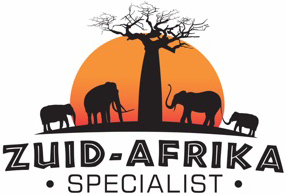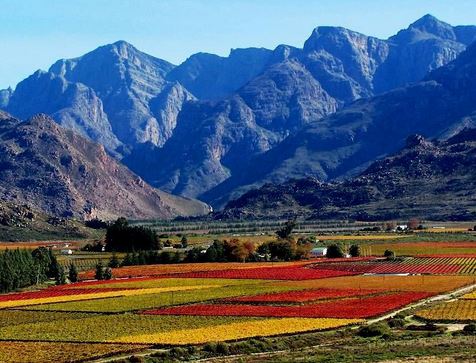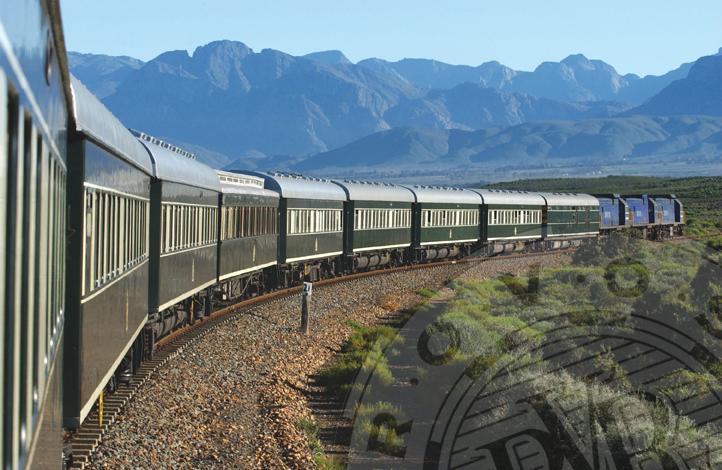Free State
Mandela once said about this state: “No matter what my mood. When I am here I feel that nothing can shut me in, that my thoughts can roam as far as the horizons …”
There are more than 30,000 farms and in Free State and the economy therefore also exists from third-party farming and third-party farming. The most important export product from Free State are soy, potatoes, sunflowers, cherries and asparagus.
For the poor population, the mining industry is an important way to generate income. The gold mining in Free State began at the end of the 19th century, when severe drilling was carried out. Gold and diamonds are still found, especially in the north of the province.
There are several wildlife and nature parks where many species of animals live. Furthermore, the region has a number of important archaeological and paleontological sites.
Climate in the Free State
The summers are hot in Free State and then the provinces also have the largest precipitation, between 650 and 450 millimeters in the east and less than 300 millimeters in the west.
In the winter it can be very cold and even frost can occur throughout the province. Snow can fall in the eastern mountains, in different places and sometimes. An average winter temperature is 7 ° C, in the summer it is 23 ° C.
Cities in the Free State
For a truly rural town you have to go to Ficksburg. This town organizes hikes to the mountains where you can still find rock carvings and the San.
Bloemfontein
Bloemfontein is located in the middle of the rural province of Free State. Bloem, as the South Africans say, is the legal capital of South Africa and also the largest city in the country. Africans from other cities sometimes joke saying that the people of Bloemfontein occasionally stand in front of a traffic light to watch the change of lights. That would be the only visible change in this city …
Striking in the old part of the city, and especially in President Brand Street, are the many sandstone monuments. Also beautiful being Angelican cathedral CityHall. The First Raads room is the oldest building in Bloemfontein. The white, simple building with thatched roof was built in 1848 and was initially used as a school. In1854 it became the meeting room of the Volksraad. It is the birthplace of the government, the church and the education system of FreeState.
At the foot of the hill, in Hamilton Park, the Orchid House accommodates 3,000 species and orchid ones growing in South Africa. Just 70 acres of Free State Botanical Gardens just outside the city. About four hundred species of plants grow here, including a number of special indigenous specimens.
Ficksburg is a pleasant surprise in the Eastern Highlands of Free State and the center of the cherry industry. Farmers growing fruit-producing local cherry and lickeur, Cherry Mampoer. The fruit is harvested between October and December. It is also called the ‘Rural Village’ and has nice sandstone houses and a Dutch Reformed church.
For the ones who have no passion for cherries, Ficksburg is like a nice city to visit.For those who have no passion for cherries, Ficksburg is still a nice city to visit. From Ficksburg hiking tours are organized in the mountains, where rock drawings of the San people can be admired.
Tourists are mainly lured to Ficksburg by the Katse Dam in the Maluti mountains. From Ficksburg there are flights to the reservoir, where you can sail and fish. The dam is at an altitude of 3,000 meters. Ficksburg is on the R26 at the border with Lesotho.
Sights in the Free State
Sentinel Hiking Trail
The most beautiful walk in Free State is the Sentinel Hiking Trail. This 10 km route lies on the border of Free State and KwaZulu-Natal and offers you great views and adventure in the Drakensberg. You will pass spectacular places such as the Devil’sTooth, the Maluti mountains, the Mount-aux-Sources and the Mahai Waterfall.
You start with a two-hour climb from Sentinal to an altitude of 3000 on the Drakensberg plateau. This takes about 2 hours if you are in reasonably good condition. You have to climb a rope ladder with a rope ladder, but if you find this wateng you can take another one out. The view on top of the mountain is more than worth the climb.
The Sentinel Hiking Trail is located in the extreme east of Free State and can be reached from
Phuthaditjhaba. From there taxi vans go to the walk.
Jacobsdal
Jagersfontein, a mine town from the more recent members and famously are diamond finds. Original water pump can still be seen on the street. The fascinating history of the city is recorded in the Open Mine Museum. Faure smith is known as one of the three cities in the world with a railway line through the center. An old steam train runs quite a while.
A coffee pot fountain reflects the name of Koffiefontein, where you can also find an open air museum and an open mine. Jacobsdal claims to have built the first wine cellar outside the Cape province. Top wines are produced by the Landzicht wine maker. Both Magersfontein and Paardeberg (war fields from the Boer War) are close to Jacobsdal. On the way to Paardeberg, also view a British block house built in 1900. At Petrusburg, an agricultural cultural center, salt pans stretch as far as the eye can see. Emmaus, the center of South Africa, is 20 km from the city.
Golden Gate Highlands National Park
The Golden Gate Highlands National Park is located in the east of Free State. Here you will find vast grasslands and spectacular sandstone formations. The park gets its name from the plains that get a golden glow in the late afternoon after the sun. The park was established in1963 to protect the sandstone cliffs.
Among other things, live goats, white-tailed wildebeest, roe deer, mountain reed goats, jackal vultures, black eagle, and steppes eagles. A nice walk is the Rhebok Hiking Trail. This is 33 km long, lasts about two days, and is a great way to visit the park.
The small Basotho Cultural Village is located in the park. This open air museum offers a glimpse into the world of the traditional Basotho tribe. Although life is played after by actors, it is quite informative.
You can stay in rondavels and eat in an outdoor restaurant. There are interesting tours along the ancient rock art where you can learn more about the medicinal effects of plants. Also visit the medicine man of the village in the village. He can predict your future by reading bones. Fasting sure and impressive experience! The Golden Gate Highlands National Park is located in the east of Free State and can be reached via R74 and the R712.
Population in the Free State
Free State has several population groups. The indigenous inhabitants of the province are the San People. They inhabited the southern part of Africa for years, but were driven to South Africa by various tribes.
Later settlers from the Netherlands, Germany and the United Kingdom would drive the San to the interior of Free State.
San volk – Bushmen
About 5,000 years ago, Bushmen started to raise cattle, and the hunter gradually became shepherds. This created a first form of prosperity, after which permanent settlements and tribal heads were developed.
Colonial
Between 1830 and 1850, white South African farmers from the Cape colony conquered by the British emigrated to the area around the Orange River. In 1842 they founded the Orange River and the Vaal River the Orange Free State under the name Voortrekkers. This colony did not remain independent for long. In 1848 the Free State was annexed by the United Kingdom.
The power of the British, however, did not last long either, as early as 1985, Free State was declared independent by the signing of the Bloemfontein Contract. Although the Orange Free State was a politically strong republic, the republic continued to have problems with the United Kingdom.
Between 1877 and 1902, the British fought a Dutch settler against Dutch, who settled there as farmers. This battle is known as the Boer Wars. The farmers seemed to be a success; they won the First Boer War. After reinforcement arrived in 1900, the British managed to gain power in South Africa. In that year, the cities of Bloemfontein and Pretoria, the capitals of Orange Free States and Transvaal, were conquered.
In 1902, the last peasants surrendered, ending the war. An agreement was concluded whereby the Peasants received £ 3 million to compensate for colonization.As a result of this agreement, the Orange Free State became a province of the Union of South Africa in 1910. The power of the Union was established in Bloemfontein, the capital of the province. The government settles in Pretoria and the parliament in Cape Town.
Current population
The population lives from agriculture, livestock and my industry.

Add to my travel plans



